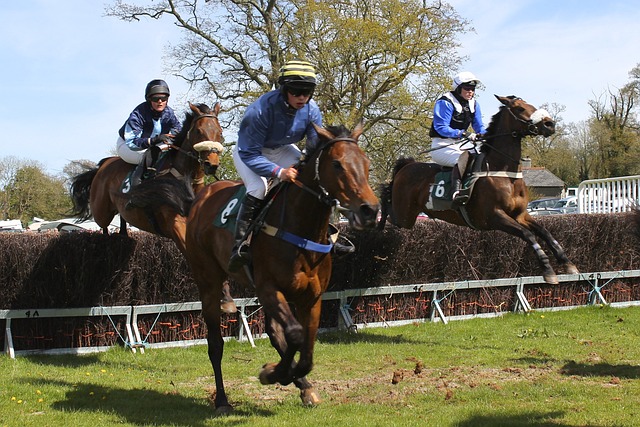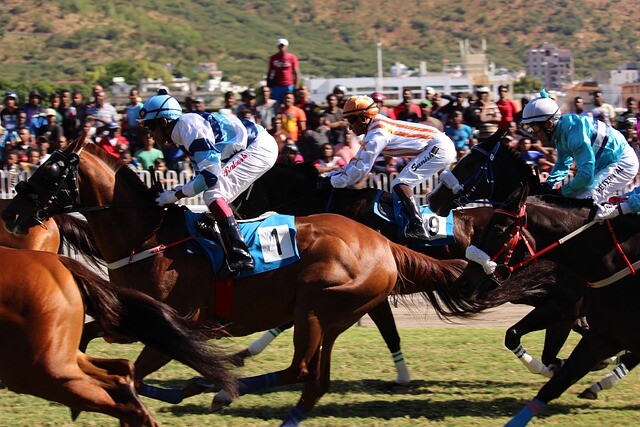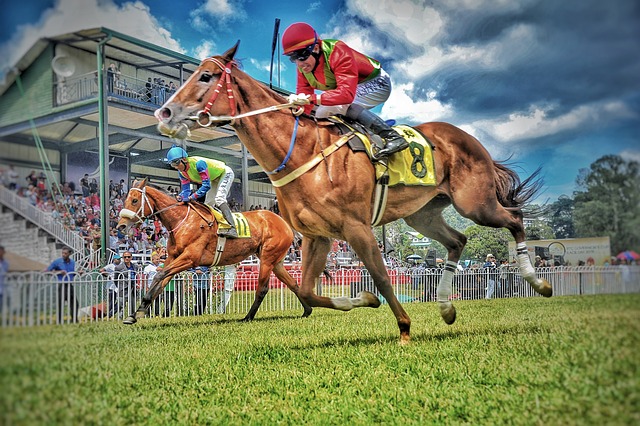 Regardless of the horse racing discipline, the quality of the race, and the location, we all know that the best jockeys can make a difference to a race outcome. While some aspects of strategy may differ depending on where the jockey rides, the qualities that the best jockeys have – tactical genius, patience, fearlessness – tend to be universal.
Regardless of the horse racing discipline, the quality of the race, and the location, we all know that the best jockeys can make a difference to a race outcome. While some aspects of strategy may differ depending on where the jockey rides, the qualities that the best jockeys have – tactical genius, patience, fearlessness – tend to be universal.
In the US, that’s certainly no different. There’s some massive money out there on the US circuit, so it’s no surprise to see some of the biggest names in the world head out there to try their luck.
Below, we will list six of the best riders in the US right now. The kind of names that have popped up on horse betting cards across 2025 and delivered for trainers, owners, and bettors alike. To clarify, we have compiled this list based on jockeys who have achieved success, as measured by earnings and strike rates, in 2025, using data up to July 2025. So, apologies to any big names missing from the list.
- Flavien Prat
Flavien Prat is very much a Frenchman, but he has been such a consistent fixture on the US racing scene since moving out full-time that he’s close to becoming an all-American sports hero. Prat currently ranks first in North America for earnings, with over $19 million in 2025, and boasts a strong 25% win rate from 625 starts. He has handled elite mounts in all three Triple Crown races, winning the Kentucky Derby in 2019 and the Preakness Stakes in 2021. He’s also earned a coveted Eclipse Award (for Outstanding Jockey in 2024), marking the high-water point of a decorated and ascending career.
- Irad Ortiz Jr.
Second in earnings on the leaderboard with over $17.7 million in 2025, Irad Ortiz Jr. logs a win percentage of around 21% from more than 820 rides. A perennial power in NYRA circuits (Belmont, Saratoga, Aqueduct), he’s regularly seen aboard graded stakes contenders and is a familiar face in Triple Crown entries. He’s won the Belmont Stakes twice, the Breeders’ Cup Classic twice, and far too many Grade 1s to list here.
- José Ortiz
José Ortiz, Irad’s younger brother, is also riding high this season, with $16 million+ in purse earnings and a sharp 24 % win rate across 750+ starts. Since joining the U.S. scene in 2012, he’s collected major race wins, notably the 2017 Belmont and 2022 Preakness, and an Eclipse Award (2017). His hot streak continues into 2025, and he and his older brother look like they have plenty more years left at the top of US racing.
- Luis Saez
Luis Saez is fourth on the earnings board in 2025 with $15.4 million and an 18 % win rate from nearly 860 mounts. A veteran of high-stakes companies, Saez combines consistency and poise under pressure, frequently partnering with top horses in the biggest graded races across the country. Saez has over 3500 winners and counting.
- Manuel “Manny” Franco
Manny Franco, fifth in the standings with over $10.3 million and a solid 19% win rate from 659 starts, is a familiar figure on NYRA tracks. A regular at the Kentucky Derby, Franco’s tactical speed, especially in early pace-making, makes him a trusted choice for trainers and owners in big graded races. He has yet to taste glory in the Kentucky Derby, though. He will be a popular figure at Churchill Downs if he can capture a Derby win before he retires.
- Brian Hernandez Jr.
Though slightly off the earnings leaderboard, Brian Hernandez Jr. remains a top-tier rider. He has firmly established himself among the elite with 2,500+ career wins, including a historic 2024 season when winning both the Kentucky Oaks and Kentucky Derby on successive days. His aggressive riding style, especially in classic and major stakes events, makes him always worth watching.
 In July, 2023, jockey Adrian Heskin announced that he would be returning to his native Ireland to continue his riding career. Born in Kilworth, Co. Cork on April 22, 1992, Heskin rode his first winner, Mystical Breeze, trained by Michael Hourigan, at Naas in March, 2009. He rode his first winner on British soil, Turf War, also trained by Hourigan, at Ffos Las three months later and, towards the end of the 2009/10 season, completed a notable double for the Co. Limerick handler on New Story in the Glenfarclas Handicap Chase at Cheltenham and Church Island in the bet365 Gold Cup Chase at Sandown Park.
In July, 2023, jockey Adrian Heskin announced that he would be returning to his native Ireland to continue his riding career. Born in Kilworth, Co. Cork on April 22, 1992, Heskin rode his first winner, Mystical Breeze, trained by Michael Hourigan, at Naas in March, 2009. He rode his first winner on British soil, Turf War, also trained by Hourigan, at Ffos Las three months later and, towards the end of the 2009/10 season, completed a notable double for the Co. Limerick handler on New Story in the Glenfarclas Handicap Chase at Cheltenham and Church Island in the bet365 Gold Cup Chase at Sandown Park. Horse racing is a sport that attracts masses of fans worldwide and has a truly global appeal. People from a range of countries not only take time to watch the latest races but to bet on them as well.
Horse racing is a sport that attracts masses of fans worldwide and has a truly global appeal. People from a range of countries not only take time to watch the latest races but to bet on them as well.  For readers unfamiliar with the name, Brian Toomey is a former National Hunt jockey, who finally retired from the saddle on June 14, 2016, but has recently made headlines by passing the British Horseracing Authority (BHA) required to be granted a training licence. Toomey rode 49 winners under National Hunt Rules in Britain, but his story is all the more remarkable for the fact that, on July 4, 2013, he was pronounced clinically dead for six seconds and, at one point, was given just a 3% chance of survival. On that day, his mount, Solway Dandy, fell heavily at the third-last flight in a conditional jockeys’ handicap at Perth and Toomey suffered a horrific head injury, which caused him to lose consciousness.
For readers unfamiliar with the name, Brian Toomey is a former National Hunt jockey, who finally retired from the saddle on June 14, 2016, but has recently made headlines by passing the British Horseracing Authority (BHA) required to be granted a training licence. Toomey rode 49 winners under National Hunt Rules in Britain, but his story is all the more remarkable for the fact that, on July 4, 2013, he was pronounced clinically dead for six seconds and, at one point, was given just a 3% chance of survival. On that day, his mount, Solway Dandy, fell heavily at the third-last flight in a conditional jockeys’ handicap at Perth and Toomey suffered a horrific head injury, which caused him to lose consciousness.